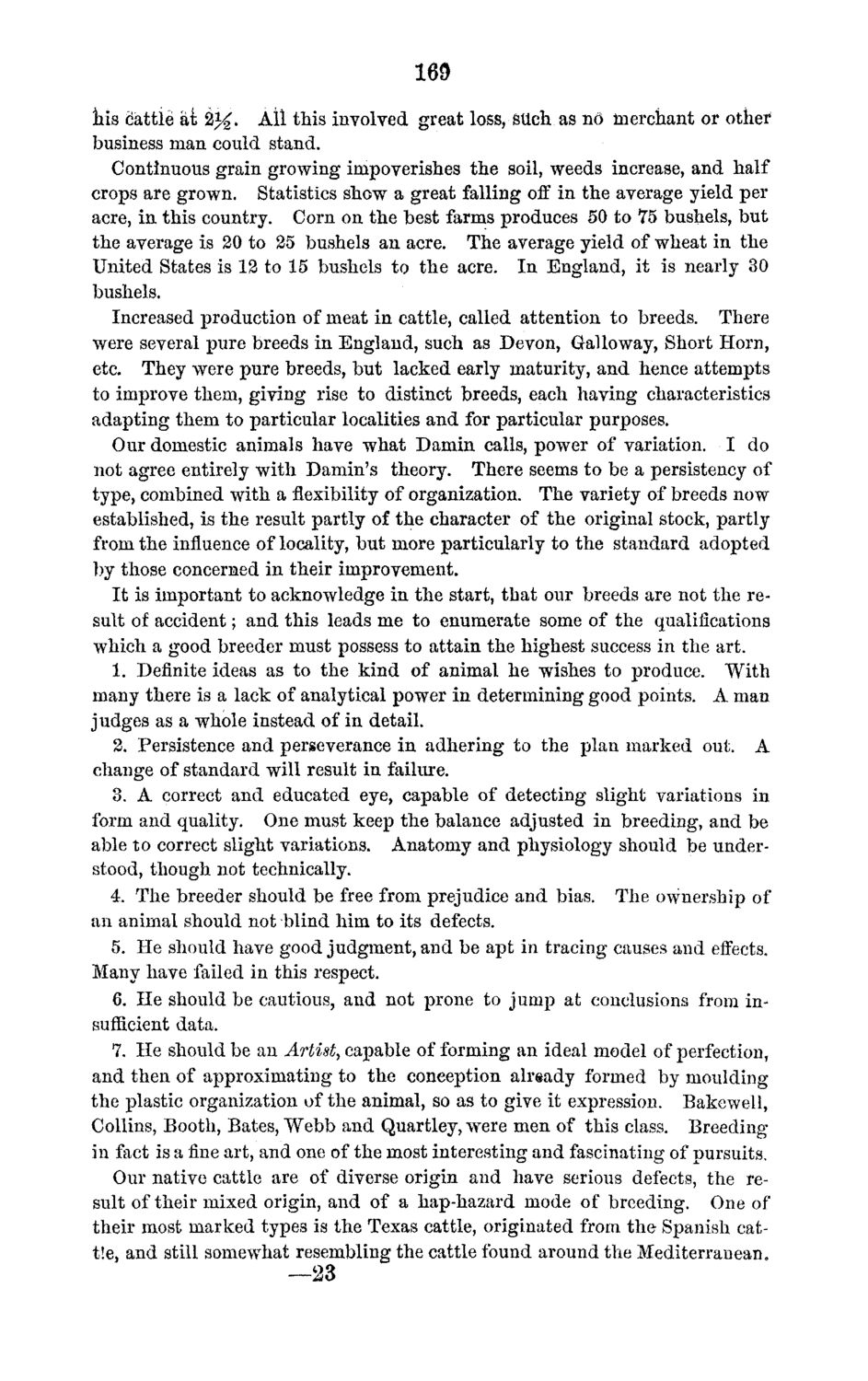| |
| |
Caption: Board of Trustees Minutes - 1870
This is a reduced-resolution page image for fast online browsing.

EXTRACTED TEXT FROM PAGE:
169 Iris cattle ai 2J£. Ail this involved great loss, SUch as nO merchant or other business man could stand. Continuous grain growing impoverishes the soil, weeds increase, and half crops are grown. Statistics show a great falling off in the average yield per acre, in this country. Corn on the best farms produces 50 to 75 bushels, but the average is 20 to 25 bushels an acre. The average yield of wheat in the United States is 12 to 15 bushels to the acre. In England, it is nearly 30 bushels. Increased production of meat in cattle, called attention to breeds. There were several pure breeds in England, such as Devon, Galloway, Short Horn, etc. They were pure breeds, but lacked early maturity, and hence attempts to improve them, giving rise to distinct breeds, each having characteristics adapting them to particular localities and for particular purposes. Our domestic animals have what Damin calls, power of variation. I do not agree entirely with Damin's theory. There seems to be a persistency of type, combined with a flexibility of organization. The variety of breeds now established, is the result partly of the character of the original stock, partly from the influence of locality, but more particularly to the standard adopted by those concerned in their improvement. It is important to acknowledge in the start, that our breeds are not the result of accident; and this leads me to enumerate some of the qualifications which a good breeder must possess to attain the highest success in the art. 1. Definite ideas as to the kind of animal he wishes to produce. With many there is a lack of analytical power in determining good points. A man judges as a whole instead of in detail. 2. Persistence and perseverance in adhering to the plan marked out. A change of standard will result in failure. 3. A correct and educated eye, capable of detecting slight variations in form and quality. One must keep the balance adjusted in breeding, and be able to correct slight variations. Anatomy and physiology should be understood, though not technically. 4. The breeder should be free from prejudice and bias. The ownership of an animal should not blind him to its defects. 5. He should have good judgment, and be apt in tracing causes and effects. Many have failed in this respect. 6. He should be cautious, and not prone to jump at conclusions from insufficient data. 7. He should be an Artist, capable of forming an ideal model of perfection, and then of approximating to the conception already formed by moulding the plastic organization of the animal, so as to give it expression. Bakewell, Collins, Booth, Bates, Webb and Quartley, were men of this class. Breeding in fact is a fine art, and one of the most interesting and fascinating of pursuits. Our native cattle are of diverse origin and have serious defects, the result of their mixed origin, and of a hap-hazard mode of breeding. One of their most marked types is the Texas cattle, originated from the Spanish cattle, and still somewhat resembling the cattle found around the Mediterranean. —23
| |